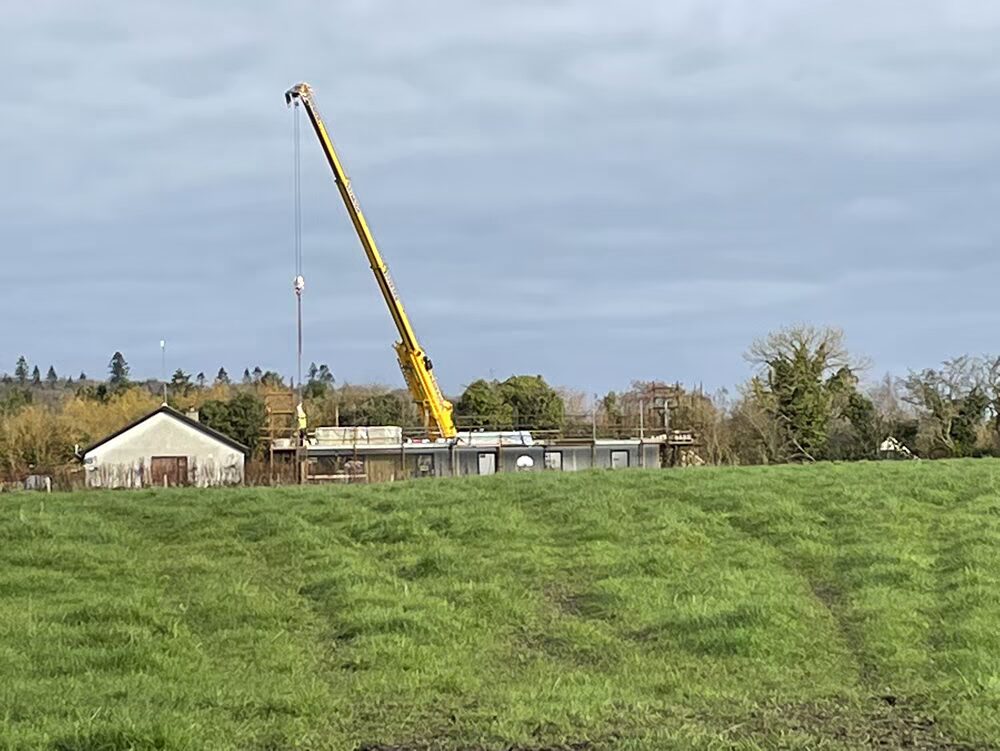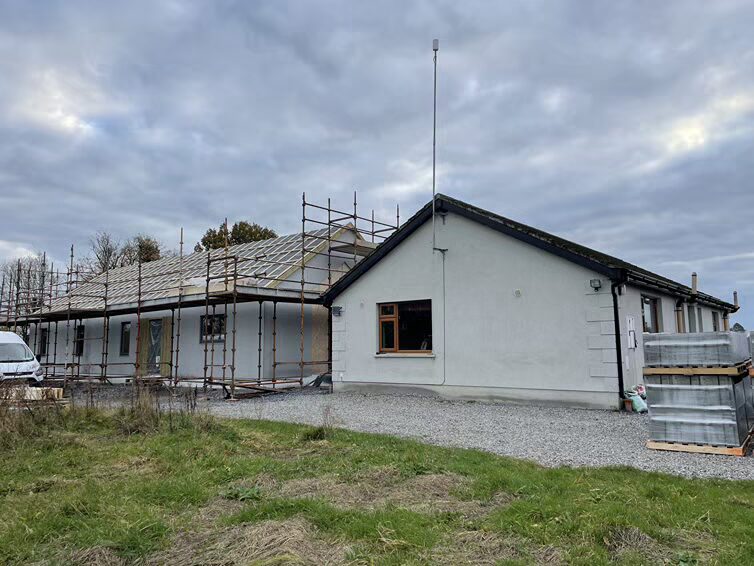In this article we cover:
- Housing Supply Strategy homes target
- Key challenges facing housing sector
- Drop in house completions
- Opportunities for self builders
- Latest NI planning statistics
The Department for Communities has launched the Housing Supply Strategy, following approval from the Northern Ireland Executive.
With an ambitious target of 100,000 new homes by 2039, the strategy aims to address the region’s pressing housing issues.
The strategy sets several key goals, including increasing housing supply, improving quality and enhancing energy efficiency.
Despite the optimism surrounding the strategy, NI’s building sector is facing substantial hurdles, including the continued restriction of new housing developments due to infrastructure limitations, such as wastewater capacity issues.
Ongoing issues have contributed to a forecasted drop in home completions for 2024, with only 5,100 new homes expected to be finished — the lowest in 65 years, according to Construction Information Services (CIS), which tracks activity in the Irish building sector.

About 19,000 homes are currently stalled because of these infrastructure constraints. However, the increased number of planning applications (up by 23 per cent in the first nine months of 2024) offers hope for recovery in the medium term.
NI Housing Supply Strategy 2024 and self-builders
For self-builders, the Housing Supply Strategy’s path to reach the 100,000 target presents both opportunities and challenges.
- More land to build on: One of the key goals of the strategy is to make land more accessible, especially public land. For self-builders, this could mean more chances to find a good plot of land, particularly in areas where land has been hard to come by or too expensive in the past.
- Tackling infrastructure issues: Problems like limited water and wastewater capacity have held up development in certain areas for years. The strategy aims to fix these issues, which could open up more places for self-builders to create their homes without running into these barriers.
- Making the process easier: The strategy’s focus on making policies and regulations clearer and simpler is good news for self-builders. Less red tape and clearer rules should make it easier to navigate the planning system and get your project off the ground.
- Better access to information: With more open data on housing, land and planning, self-builders will be able to make smarter decisions about where to build, what it’ll cost and whether their project is feasible. This could save time and help avoid costly mistakes.
- Building for the future: As climate change and sustainability become more of a focus, self-builders will need to consider low-carbon building standards in their designs. The strategy supports new, greener ways to build, which could help self-builders make their homes more energy-efficient and future-proof.
- New construction methods: With a push for innovation in construction, self-builders will have access to new materials and building techniques that can help reduce costs and build more efficiently. This could mean shorter timelines and fewer hurdles in getting your home built.
- Faster planning decisions: The strategy includes improvements to the planning process, so self-builders could see quicker decisions on their applications. This means fewer delays and a smoother experience overall when trying to get your project approved.
Potential financial supports for self-build / energy upgrade projects
More funding options: The HSS will look at creative ways to make it easier to access different types of public and private funding, like Financial Transactions Capital (FTC) and institutional funding, to help create and deliver new, affordable housing solutions.
Energy efficiency grants: The strategy highlights the need to deliver a scheme to help cover the costs of adding sustainable features like solar panels or better insulation for people on lower incomes living in private accommodation.
Q2 2024 NI Planning Statistics: a lens on current challenges
The latest NI Planning Statistics highlight challenges that self-builders may face under the Housing Supply Strategy:
Delays in processing applications: Local applications averaged 18.8 weeks to process, exceeding the 15-week target. Addressing these delays will be crucial for the strategy’s success.
High approval rates: Encouragingly, 94.9% of applications were approved, offering reassurance to self-builders about the likelihood of securing planning permission.
Regional disparities: Some councils, such as Mid and East Antrim and Fermanagh and Omagh, are processing applications significantly faster than others, highlighting the need for system-wide consistency.




A vision for the future
The Housing Supply Strategy presents a significant opportunity to reshape NI’s housing landscape. For self-builders, it promises a more supportive environment, addressing key challenges like land availability, infrastructure and financing.
However, realising these benefits will depend on the effective implementation of reforms and a collective effort from government, councils and the wider housing sector.
At its launch in the Assembly, Communities Minister Gordon Lyons introduced the first cross-departmental plan to tackle these challenges, stating, “The housing issues we face are significant, and the current situation is unsustainable. For too long, there has been no coordinated approach to housing supply. That ends now.”




















